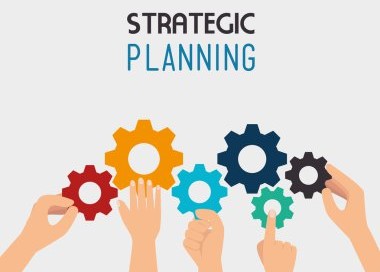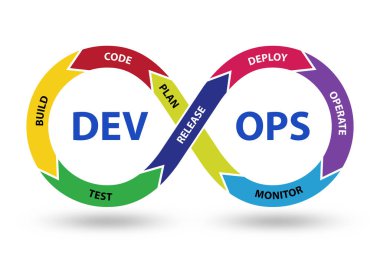Customer-Centric Product Engineering: Driving Value through User Experience

In today’s fast-paced, technology-driven world, customer-centricity is no longer a more advantage—it's essential for success. Customer-centric product engineering revolves around the principle that the end-user's needs, preferences, and behaviors should shape every step of the product development process. Prioritizing user experience (UX) results in products that offer real value and drive customer satisfaction. But how do businesses achieve this while staying agile? The answer lies in digital acceleration, which helps companies rapidly evolve and refine their product designs based on direct feedback from the user base.
The Importance of Building Products with the End-User in Mind
At the heart of customer-centric product engineering is the idea that products must solve real problems for their users. A product’s success is determined not by its features but by how well it meets user needs. Therefore, understanding the customer’s journey, challenges, and expectations becomes pivotal.
1. User-Centric Design
Designing products from the perspective of the end-user ensures that every feature, function, and interaction adds value. User experience (UX) design principles help teams understand what users actually want and need, rather than what the company assumes they want.
Tip: Incorporate tools like user personas and customer journey maps to understand user needs. Collect regular feedback from users during the design phase to ensure alignment.
2. Continuous User Feedback
Customer-centric engineering doesn't stop at product launch. It’s crucial to have a continuous feedback loop, gathering insights on user satisfaction, pain points, and desired features. This data can be used to refine and iterate on the product, keeping it relevant and valuable over time.
Tip: Set up feedback channels (e.g., surveys, in-app feedback tools) that allow users to share their thoughts easily and regularly. Incorporating feedback in product updates ensures the product remains aligned with customer expectations.
3. Personalization and Customization
Today’s users expect products that can be personalized to suit their unique needs. Customer-centric engineering leverages data and analytics to offer tailored experiences, ensuring that users get the most value out of the product.
Tip: Use AI-driven personalization engines to provide users with customized recommendations or experiences based on their behavior and preferences.
How Digital Acceleration Tailors Product Design to Customer Needs
Digital acceleration plays a significant role in customer-centric product engineering by enabling companies to gather real-time data, iterate quickly, and make data-driven decisions. It empowers businesses to respond rapidly to evolving customer needs and market trends, ensuring that their products remain competitive and aligned with user expectations.
1. Rapid Prototyping and Iteration
Digital acceleration allows companies to quickly build and test prototypes, ensuring that the product design aligns with user needs before full-scale development. With agile methodologies, product teams can release updates frequently, responding to user feedback faster than traditional development cycles.
Tip: Adopt agile and lean methodologies to reduce the time between iterations and enable continuous product improvements. Platforms like Figma or InVision support rapid prototyping and real-time collaboration between product designers and engineers.
2. Data-Driven Decision Making
Digital acceleration enables the collection and analysis of massive amounts of user data, providing insights into user behavior, preferences, and pain points. This data informs product design decisions, ensuring that updates or new features address actual customer needs rather than assumptions.
Tip:Use advanced analytics platforms (e.g., Google Analytics, Mixpanel) to track user behavior, engagement, and feature usage. These insights can guide the development of new features or enhancements that will have the most impact on user satisfaction.
3. Seamless Integration with User Ecosystems
A customer-centric product needs to integrate seamlessly into the user’s existing digital ecosystem. Whether it’s connecting with other software, devices, or platforms, a product that fits naturally into the user’s daily workflow adds more value.
Tip: Leverage APIs and microservices architecture to ensure that your product can integrate with popular platforms, enhancing the user’s overall experience by making your product part of their larger ecosystem.
4. Real-Time Customization through AI
AI and machine learning allow for real-time adjustments to the product based on user preferences and behavior. By analyzing how different users interact with a product, businesses can create personalized experiences on the fly, improving overall user satisfaction.
Tip:Use AI-powered recommendation systems or chatbots to enhance the product’s ability to serve users in real-time. These tools can offer personalized solutions based on user actions, leading to better engagement and retention.
Conclusion
In a market where user expectations are constantly evolving, customer-centric product engineering is essential to delivering products that resonate with and delight customers. By focusing on user needs at every stage of the product development process, businesses can create products that drive real value.
Digital acceleration further enhances this approach, enabling companies to gather user data, iterate rapidly, and continuously refine their products. As companies seek to stay competitive in a customer-driven market, prioritizing both user experience and agile product development will be key to long-term success.
At Raphus Solutions,we believe in building products that focus on the end-user experience. By combining customer-centric engineering with digital acceleration, we help enterprises evolve into agile, user-driven organizations that deliver high-value products efficiently.



